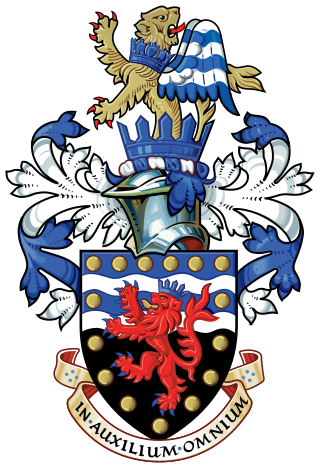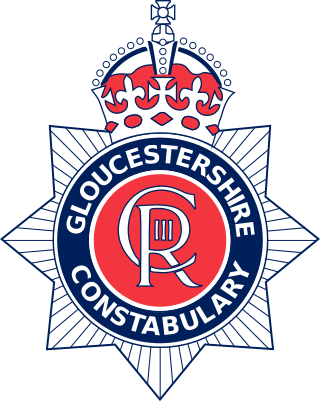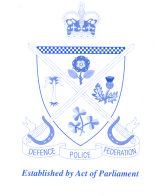Related Research Articles

Avon was a non-metropolitan and ceremonial county in the west of England that existed between 1974 and 1996. The county was named after the River Avon, which flows through the area. It was formed from the county boroughs of Bristol and Bath, together with parts of the administrative counties of Gloucestershire and Somerset.
Chief constable is the rank used by the chief police officer of every territorial police force in the United Kingdom except for the City of London Police and the Metropolitan Police, as well as the chief officers of the three 'special' national police forces, the British Transport Police, Ministry of Defence Police, and Civil Nuclear Constabulary. The title is also held by the chief officers of the principal Crown Dependency police forces, the Isle of Man Constabulary, States of Guernsey Police Service, and States of Jersey Police. The title was also held, ex officio, by the president of the Association of Chief Police Officers under the Police Reform Act 2002. It was also the title of the chief officer of the Royal Parks Constabulary until this agency was disbanded in 2004.

Avon and Somerset Police is the territorial police force responsible for law enforcement in the five unitary authority areas of Bristol, Bath and North East Somerset, North Somerset, Somerset, and South Gloucestershire in South West England.

Devon and Cornwall Police is the territorial police force responsible for policing the ceremonial counties of Devon and Cornwall in South West England. The force serves approximately 1.8 million people over an area of 3,967 square miles (10,270 km2).

Warwickshire Police is the territorial police force responsible for policing Warwickshire in England. It is the second smallest territorial police force in England and Wales after the City of London Police, with only 823 regular officers as of September 2017. The resident population of the force area is 554,002.

Dorset Police is the territorial police force responsible for policing the county of Dorset in South West England, which includes the largely rural area covered by Dorset Council, and the urban conurbation of Bournemouth, Christchurch and Poole.

Gloucestershire Constabulary is the territorial police force responsible for policing the non-metropolitan county of Gloucestershire in South West England.

The Hampshire and Isle of Wight Constabulary is the territorial police force responsible for policing the counties of Hampshire and the Isle of Wight in South East England.

Bristol Constabulary, also called Bristol City Police, was a police force responsible for policing the city of Bristol in south-west England from its foundation in 1835 until 1974, when it was amalgamated under the Local Government Act 1972 with Somerset and Bath Constabulary and parts of the Gloucestershire Constabulary to form the Avon and Somerset Constabulary.
Barnsley Borough Police was the police force operating in county borough of Barnsley, England until 1 October 1968. The force was merged with other forces in 1968 to form the West Yorkshire Constabulary. The area passed to the South Yorkshire Police in 1974.

Shoscombe is a small village and civil parish in the valley of the Wellow Brook in north-east Somerset, about 7 miles (11 km) south of Bath, England. The parish has a population of 443.

The Police Act 1964 was an Act of the Parliament of the United Kingdom that updated the legislation governing police forces in England and Wales, constituted new police authorities, gave the Home Secretary new powers to supervise local constabularies, and allowed for the amalgamation of existing forces into more efficient units.

Somerset Constabulary was the police force responsible for policing the county of Somerset, England, between 1856 and 1967. It was formed as a result of the County and Borough Police Act 1856. This act made it compulsory for the county authorities to form a county police force which up until this point had not been done. During its 111 year history, five smaller police forces within Somerset were merged into Somerset Constabulary. These were Wells City Police and Glastonbury Borough Police in 1856, Yeovil Borough Police in 1859, Chard Borough Police in 1889 and Bridgwater Borough Police in 1940. Somerset Constabulary was amalgamated with Bath City Police on 1 January 1967 to become the Somerset and Bath Constabulary. As a result of the Local Government Act 1972 this new force was short lived, lasting just 7 years when on 1 April 1974 it became part of Avon and Somerset Constabulary which polices the area to this day.
The Bath City Police was a police force responsible for policing the County Borough of Bath in Somerset, England. It existed between 1836 and 1967. The Bath City Police, as an organization, was formed as a result of Municipal Corporations Act 1835, though it did not begin commencing duties until 15 February 1836. In 1852 the force had a strength of 86 police officers.

The Defence Police Federation (DPF) is the representative body of Ministry of Defence Police (MDP) officers, up to and including the rank of Chief Superintendent. There are around 2,000 members as of 2014. Membership is restricted by law to serving officers. MDP officers have their own federation because they are also part of the Civil Service and are accountable to the Secretary of State for Defence, and not the Home Secretary. Moreover, MDP officers have different terms and conditions of service to civilian police officers. Officers' pay is directly linked to national settlements made by the Home Office and the Police Federation of England and Wales. The DPF also administer the Defence Police Retired Officers Association. With an 'all armed' membership, the DPF maintains close ties with the Police Firearms Officers Association (PFOA); as of 1 October 2014 all DPF members, have automatic membership of the PFOA.
The Police Superintendents’ Association is the sole representative body for police officers in the ranks of superintendent and chief superintendent in England and Wales. Its members are the senior operational leaders in policing in the 43 Home Office forces, British Transport Police, Civil Nuclear Constabulary, Isle of Man Constabulary, the Bermuda Police Service, Royal Gibraltar Police and the Gibraltar Defence Police. The association's headquarters are in Pangbourne, Berkshire.
Wells City Police was the police force responsible for policing the city of Wells in England between 1836 and 1856.

Wales is served by four police forces, Dyfed–Powys Police, Gwent Police, North Wales Police and South Wales Police.
References
- ↑ "Police Records". Somerset County Council. Retrieved 10 April 2009.
- 1 2 Clark, Peter (2015). Police Reference: England and Wales. p. 1969. ISBN 978-0-9858978-0-2.
- ↑ "POLICE FORCES, ENGLAND AND WALES (ORGANISATION) (Hansard, 18 May 1966)". Parliamentary Debates (Hansard) . 18 May 1966. Retrieved 26 November 2017.
- ↑ "National Association of Retired Police Officers Avon and Somerset Branch". National Association of Retired Police Officers Avon and Somerset Branch. Retrieved 10 April 2009.